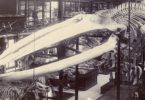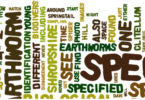Boron Family (Chemistry) Multiple Choice Questions:
Which of the following statements about H3BO3 is not correct
(a) It is a strong tribasic acid
(b) It is prepared by acidifying an aqueous solution of borax
(c) It has a layer structure in which planar BO3 units are joined by hydrogen bonds
(d) It does not act as proton donor but acts as a Lewis acid by accepting hydroxyl ion
Conc. HNO3
(a) Reacts with aluminium vigorously
(b) Reacts with aluminium to form aluminium nitrate
(c) Does not react with aluminium
(d) Reacts with platinum
Which of the following is not true about potash alum
(a) Its empirical formula is KAl(SO4)2.12H2O
(b) Its aqueous solution is basic
(c) It is used in dyeing industries
(d) On heating it melts in its water of crystallization
In diborane, the two H – B – H angles are nearly
(a) 60°, 120°
(b) 95°, 120°
(c) 95°, 150°
(d) 120°, 180°
Related: Photosynthesis application questions
The hardest substance amongst the following is
(a) Be2C
(b) Graphite
(c) Titanium
(d) BC
AlCl3 is
(a) Anhydrous and covalent
(b) Anhydrous and ionic
(c) Covalent and basic
(d) Coordinate and acidic
In Hall’s process, the main reagent is mixed with
(a) NaF
(b) Na3AlF6
(c) AlF3
The structure of diborane (B2H6) contains
(a) Four 2c-2e bonds and two 3c-2e bonds
(b) Two 2c-2e bonds and four 3c-2e bonds
(c) Two 2c-2e bonds and two 3c-3e bonds
(d) Four 2c-2e bonds and four 3c-2e bonds
Related: Nervous system exam questions answers
Which of the following does not exist in free form?
(a) BF3
(b) BCl3
(c) BBr3
(d) BH3
Soft heavy metal melts at 30oC and is used in making heat sensitive thermometers the metal is
(a) Galium
(b) Sodium
(c) Potassium
(d) Caesium
Aluminum is more reactive than iron. But aluminum is less easily corroded than iron because
(a) Aluminium is a noble metal
(b) Oxygen forms a protective oxide layer
(c) Iron undergoes reaction easily with water
(d) Iron forms mono and divalent ions
In the electrolytic method of obtaining aluminum from purified bauxite, cryolite is added to the charge to
(a) Minimize the heat loss due to radiation
(b) Protect aluminum produced from oxygen
(c) Dissolve bauxite and render it a conductor of electricity
(d) Lower the melting point of bauxite
Related: Mole concept questions
Aluminum vessels should not be washed with materials containing washing soda since
(a) Washing soda is expensive
(b) Washing soda is easily decomposed
(c) Washing soda reacts with aluminum to form soluble aluminate
(d) Washing soda reacts with aluminum to form insoluble aluminum oxide
Bauxite containing impurities of iron oxide is purified by
(a) Hoop’s process
(b) Serpeck’s process
(c) Baeyer’s process
(d) Electrolytic process
Purification of aluminum done by electrolytic refining is known as
(a) Serpeck’s process
(b) Hall’s process
(c) Baeyer’s process
(d) Hoop’s process
Which one of the following is the correct statement?
(a) The hydroxide of aluminum is more acidic than that of boron
(b) The hydroxide of boron is basic, while that of aluminum is amphoteric
(c) The hydroxide of boron is acidic, while that of aluminum is amphoteric
(d) The hydroxide of boron and aluminum are amphoteric
Related: questions on young’s double slit experiment
Which of the following is formed when aluminum oxide and carbon are strongly heated in dry chlorine gas?
(a) Aluminium chloride
(b) Hydrate aluminium chloride
(c) Anhydrous aluminum chloride
In the metallurgy of aluminum, cryolite is mixed in the molten state because of it.
(a) Increases the melting point of alumina
(b) Oxidises alumina
(c) Reduces alumina
(d) Decreases the melting point of alumina
In Hoope’s process for refining aluminum, the fused materials form three different layers and remain separated during electrolysis. This is because
(a) The upper layer is kept attracted by the cathode, and the lower layer is kept attracted by the anode
(b) There is a special arrangement in the cell to keep the layers separate
(c) The three layers have different densities
(d) The three layers are maintained at different temperatures
In the electrolytic extraction of aluminum, cryolite is used
(a) To obtain more aluminum
(b) To decrease the temperature to dissolve bauxite
(c) To protect the anode
(d) As a reducing agent
Related: Genetic Engineering questions and answers
Which of the following is known as inorganic benzene?
(a) Borazine
(b) Boron nitride
(c) p-dichlorobenzene
(d) Phosphonitrilic acid
Moissan boron is
(a) Amorphous boron of ultra purity
(b) Crystalline boron of ultra purity
(c) Amorphous boron of low purity
(d) Crystalline boron of low purity
In the extraction of aluminum, bauxite is dissolved in cryolite because
(a) It acts as a solvent
(b) It reduces the melting point of aluminum oxide
(c) It increases the resistance of the aluminum oxide
(d) Bauxite becomes active
Aluminium has a great affinity for oxygen, and its oxidation is a process that involves exothermic processes. This fact is made use of in
(a) Preparing thin foils of aluminum
(b) Making utensils
(c) Preparing duralumin alloy
(d) Thermite welding
Related: Purification Methods in Organic Chemistry
In the extraction of aluminum, the electrolyte is
(a) Fused cryolite with feldspar
(b) Fused cryolite with fluorspar
(c) Pure alumina in molten cryolite
(d) Pure alumina with bauxite and molten cryolite
Alumina is
(a) Acidic
(b) Basic
(c) Amphoteric
Aluminium is not used
(a) In silvery paints
(b) For making utensils
(c) As a reducing agent
(d) As oxidizer in metallurgy
In the electrolysis of alumina, cryolite is added to
(a) Increase the melting point of alumina
(b) Increase the electrical conductivity
(c) Minimise the anodic effect
(d) Remove impurities from alumina
Related: Protein quiz questions and answers
Crystalline metal can be transformed into metallic glass by
(a) Alloying
(b) Pressing into thin plates
(c) Slow cooling of molten metal
(d) Very rapid cooling of a spray of the molten metal
In the electrolysis of aluminum oxide, which of the following is added to accelerate the process
(a) Silica
(b) Cryolite
(c) Nickel
(d) Silicate
When Al is added to the KOH solution:
(a) No action takes place
(b) Oxygen is evolved
(c) Water is produced
(d) Hydrogen is evolved
Hydrogen gas will not reduce:
(a) Heated cupric oxide
(b) Heated ferric oxide
(c) Heated stannic oxide
(d) Heated aluminium oxide
In the thermite process, the reducing agent is
(a) Al
(b) C
(c) Mg
(d) Na
Electrolytic reduction of alumina to aluminum by Hall-Heroult process is carried out in the presence of
(a) NaCl
(b) Fluorite
(c) Cryolite, which forms a melt with a lower melting temperature
(d) Cryolite, which forms a melt with a higher melting temperature






